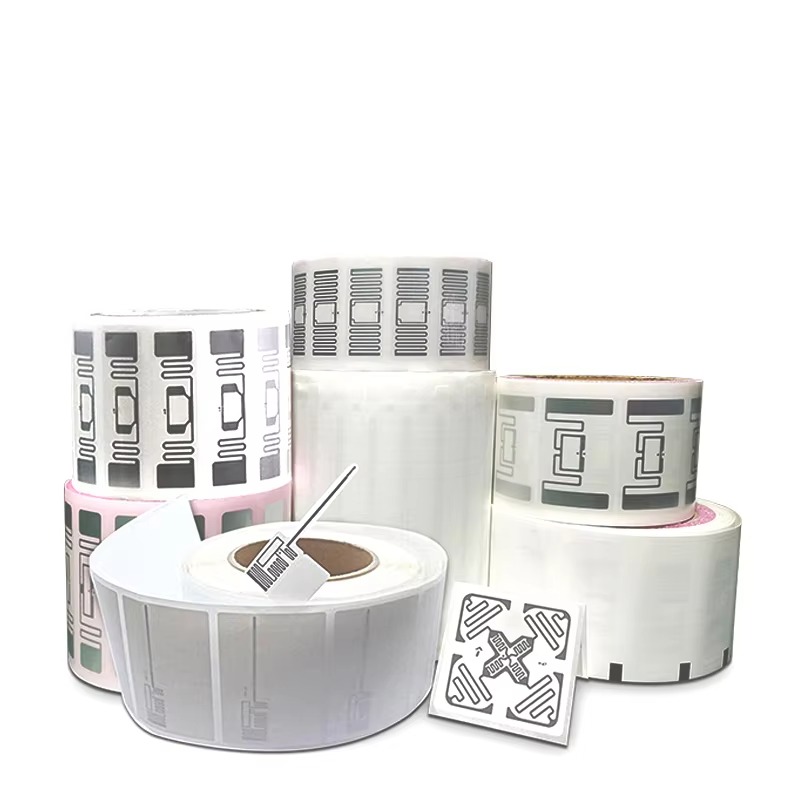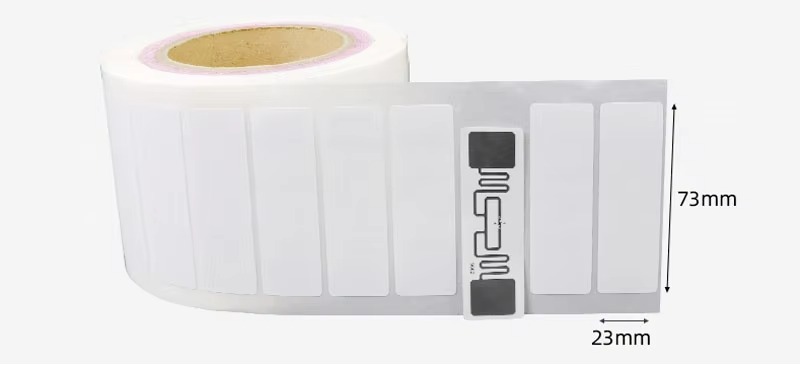
Elevate Your Dining Experience with NFC Menu Tags
Transform dining with NFC Menu Tags! Effortlessly access digital menus by scanning or tapping, ensuring quick, seamless ordering for an enhanced customer experience.
The creation of RFID tags involves a precise and efficient process, ensuring each RFID tag functions flawlessly. Here’s a breakdown of the key stages:
The initial phase focuses on assembling the core component of the RFID tag – the inlay. Rolls of pre-made RFID inlays, which contain the microchip and antenna, are prepared. These inlays are then fed into a lamination machine along with a printable top layer (face stock) and 3M adhesive. The machine uses heat to bond these three layers together—the printable material, the RFID inlay, and the adhesive—creating a semi-finished, multi-layered RFID tag, much like assembling a sandwich.

The laminated material, now a three-layered structure, proceeds to the die-cutting stage. A specialized die-cutting machine precisely cuts the material into individual tags of the desired shape and size. The material enters the machine, and the middle layer, containing the inlay, is carefully cut. The output consists of individual RFID tags, each with the correct dimensions, but still connected in a continuous roll.
Although the RFID tags are now cut to the right size, they remain connected in a roll, making them unsuitable for individual use. To address this, a slitting machine is employed. This machine carefully slits the roll of RFID tags, separating them into smaller, individual rolls, ready for the final stage of production.
Quality assurance is paramount. Each RFID tag, now separated into smaller rolls, undergoes rigorous testing. Every RFID tag is individually checked to ensure it functions correctly. Any RFID tag that fails this test is discarded. This stringent testing process guarantees that only fully operational RFID tags proceed to the final step, which is packaging and preparing the RFID tags for shipment to the customer.
Inlay Sandwich Creation: Combining the RFID inlay, printable layer, and adhesive.
Shape Definition: Using a die-cutting machine to cut out individual tags.
Individual Roll Creation: Slitting the large roll into smaller, usable rolls.
Quality Assurance and Dispatch: Testing each RFID tag and packaging those that pass for shipment.
An RFID tag is a small electronic device that contains a microchip and an antenna. It’s designed to store and wirelessly transmit data to an RFID reader. When an RFID tag comes within range of a reader, the reader sends out radio waves that power the RFID tag. The RFID tag then responds by sending back its unique identification number or other stored information. Essentially, it allows for automatic identification and tracking of objects or individuals without requiring line-of-sight or physical contact. This technology is used in a wide range of applications, such as access control, asset tracking, inventory management, and supply chain logistics.

An RFID label is a type of RFID tag that is designed to be affixed to objects like a sticker. It combines an RFID inlay (chip and antenna) with a printable label material and an adhesive backing. This allows for easy application to various items, making it a popular choice for tracking and identification purposes. RFID labels come in various forms, such as passive, active, or battery-assisted passive, each offering different read ranges and capabilities. They can be customized with printed information, barcodes, and graphics, making them versatile for use in retail, logistics, manufacturing, and other industries.
RFID stickers, which are essentially RFID labels, have a multitude of uses across various industries. Here are some common applications:
Inventory Management: Tracking products in warehouses and retail stores for efficient stock control and theft prevention.
Asset Tracking: Monitoring the location and movement of valuable equipment and assets in offices, hospitals, and other facilities.
Supply Chain Management: Improving visibility and efficiency in the supply chain by tracking goods from manufacturing to delivery.
Access Control: Used in badges and cards for secure entry to buildings, restricted areas, and events.
Library Management: Automating the check-in and check-out process for books and other media.
Retail: Enhancing the customer experience with features like smart shelves and automated checkout.
Anti-Counterfeiting: Authenticating products and preventing the distribution of counterfeit goods.
Baggage Tracking: Used by airlines to track and manage passenger luggage.
The specific use of an RFID sticker depends on its type, frequency, and the overall system it’s integrated into.
Newest trends and common knowledge in RFID laundry tags.

Transform dining with NFC Menu Tags! Effortlessly access digital menus by scanning or tapping, ensuring quick, seamless ordering for an enhanced customer experience.

RFID tags (Radio Frequency Identification tags) are electronic labels that use radio waves for data transmission and storage.

RFID tag technology enhances food and beverage processing by improving efficiency, safety, and management effectiveness, revolutionizing traditional practices.
Didn’t find what you want? Ask our manager for help!